|
CDC Hog
by Goran Grubic
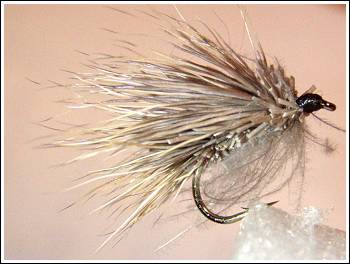
Last
year I started to use a new version of Hedgehog fly. Hedgehogs are not
exactly new flies. First version, tied by famous British angler Richard
Walker, was made just from clipped deer hair. It was obviously inspired
with the way the Muddler Minnow head was formed. I used that version of
the Hedgehog during eighties with some success, but after that I almost
forgot about it.
In more recent times new and
interesting versions of the Hedgehog appeared, the best was Sedgehog,
which I discovered in an excellent article written by Stan Headley,
probably the best known modern exponent of Scottish loch style fly
fishing. That version consisted of several clumps of roe deer hair, with
some dubbing in between, and with hen hackle. It is very fine fly for
lake fishing, but it proved to be quite deadly on rivers too, not only
in sedge time but also as a general attractor pattern. The good side of
all those patterns is that they are great floaters, due to the well
known properties of deer hair.

I used Sedgehogs for some time,
and still do occasionally, but the tying of the pattern is time
consuming a bit, and so I got the idea to completely abandon dubbing in
its construction. It became possible to tie the fly in just a minute or
two. The dressing is straightforward: it is made by placing clumps of
roe deer hair on top of the hook and letting hair butts to flare around
the shank. It takes 3-6 clumps to cover the shank of hooks in sizes from
14 to 8. Than the fly is finished with a whip knot, and the hair below
the hook shank is removed with a single cut of scissors or razor blade.
It is much faster to tie than Sedgehog, and was fairly successful on my
local trout rivers.
The problem with all of the
mentioned flies was that, in my experience, they were not suited to all
sedge/caddis situations on the rivers. In times when trout were obsessed
with hatching caddis pupae some other flies, understandably, were more
successful. One of the better flies for such situation is CDC & Elk, a
great fly invented by the maestro of Dutch tiers Hans Weilenmann. My
idea was to mix good features of the Hedgehog and the CDC & Elk into one
fly. Thus we came to the fly we now call CDC Hog. Its tying is shown in
the following pictures.
Pic. 1. The dubbing loop with barbs cut
from one CDC feather is created on the end of the hook shank.
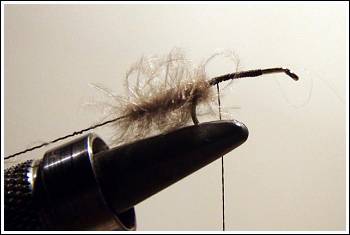
Pic. 2. First clump of deer hair is
attached, taking care that tips remain on top of the hook.
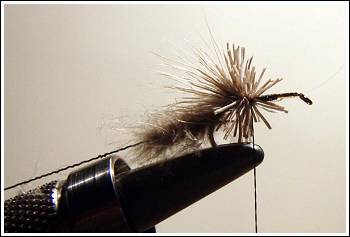
Pic. 3. Second clump of deer hair is
attached.

Pic. 4. Third clump of deer hair is
attached.

Pic. 5. Fourth clump of deer hair is
attached.

Pic. 6. All hairs below hook shank are
cut flat
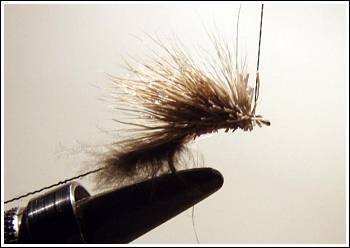
Pic. 7. The CDC dubbing loop is
fastened below shank.

Pic. 8. The finished fly
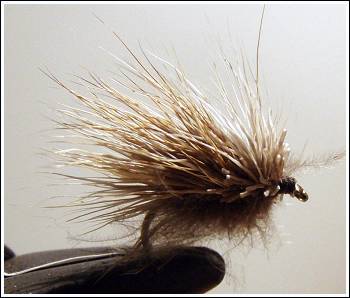
As can be seen from the
pictures, the fly is very simple and easy to tie. So far I tied it in
two natural roe deer hair colors: light and dark, and with natural
mallard CDC. The first several outings to the river produced several
dozens of trout during the second part of the previous season. It floats
like cork, especially if coated with some Gink on the top of the hair.
This year it will be tested more and I do hope that it would became firm
favourite, not just for me and my friends but also to any of you who
would like to try it.
Text and photos by Goran
Grubic,
March 2009
www.flyandtrout.com
|